Digs 2014: Layers of Meaning

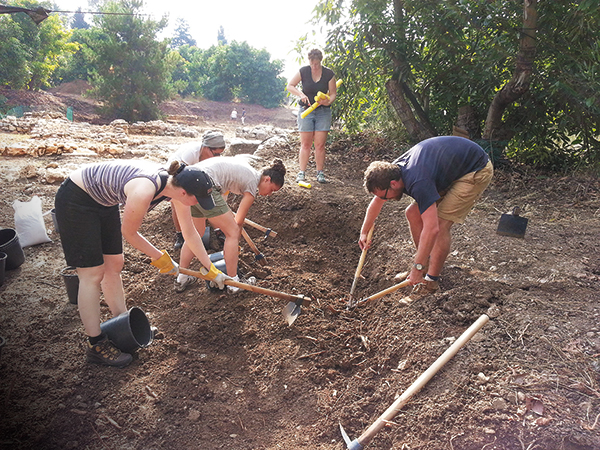
BAR readers are familiar with a common archaeological fairy tale: The first discovery of an ancient artifact opens a majestic bridge to the past. This lovely trope ends with the archaeologist and artifact living happily ever after.
But it doesn’t happen that way. When new volunteers excavate pottery on the first day of a dig, they are usually disappointed by the reactions of the dig’s veterans. Often the find gets tossed. The project’s old hands confirm the pottery’s antiquity, only to frustrate the new volunteer by shrugging off the relative insignificance of an out-of-context or nondiagnostic find. The old-timers know the real excitement is still to come.

This summer I worked in Israel for the first time as a volunteer at the Canaanite site of Tel Kabri on the Mediterranean coast of northern Israel, where we were excavating a Middle Bronze Age (c. 1800–1550 B.C.E.) palatial complex.a Luckily for our team of volunteers, Eric Cline and Assaf Yasur-Landau (the excavation’s codirectors) weren’t jaded or callous when they suggested that continuing the excavation was a higher priority than swooning over sherds in topsoil.
The turning point on an excavation comes when a team finds itself in ancient strata, but that doesn’t happen on the first day. So how does a dig start?
Our site, situated in an avocado grove, didn’t look like the carefully articulated ancient settlements depicted in the pages of BAR. Previously excavated areas were covered with backfilled dirt. Before we arrived, a backhoe had removed avocado trees lining the sides of earlier excavation areas. (Despite the recent advertisements in BAR characterizing the use of heavy machinery as “Cater-pillaging” [see “
Our first job was to clear the site. We cut through topsoil with pickaxes, removed loose dirt and vegetation with turias (heavy square-bladed hoes) and, using wheelbarrows and teamwide bucket-passing lines, hauled hundreds of cubic feet of dirt off-site. Fieldwork consists of much more than excavation. Team members scrambled up trees to secure massive tarps for shade as volunteers lined balks with sandbags and area supervisors strung up excavation grids below.
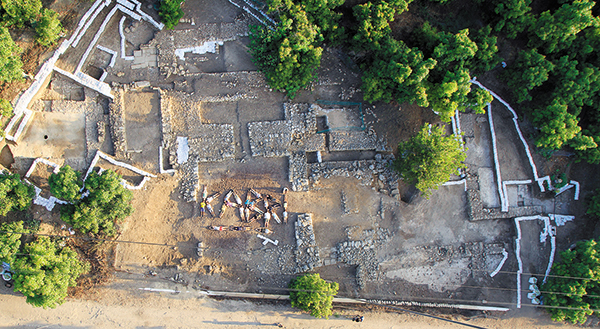
We all found our individual niches as we settled into a rhythm. In Kabri’s area D-West, Marielle Velander took morning elevations using a “dumpy” level (a viewer aimed at a vertical measure held on the site), our high school volunteer Sara Soltani impressed older team members with her adept pickaxe ferocity, Laurel Poolman examined faunal remains and, when we paused to form bucket-lines, junior area supervisor Kyle Leonard caught and neatly dumped buckets on the peak of our rapidly forming dirt mountain. We playfully tested Kyle’s precision with a blindfold, and his Zen-like precision kept the bucket-line moving.
Archaeology veterans taught new volunteers tricks of the trade. One volunteer, Henry Pelgrift (pictured on the cover), had been traveling from site to site for months and arrived at Kabri with his own machete and much-coveted patishes (small triangular-bladed picks used to articulate walls and cut clean section walls, revealing the stratigraphy of excavated areas—see “Tools of the Trade”).
By our 8:00 a.m. breakfast break (we set out to the site at 4:30 each morning), we had each hauled what seemed like countless buckets of soil and shed countless buckets of sweat. Volunteers need to take care of both the site and themselves. Archaeology is a “contact sport.” Since excavation is inherently destructive, the team needs to stay vigilant at all times. While pickaxes and heavy tools must be used with caution, the summer heat is an even bigger threat. Hats, sunscreen and water are among an archaeologist’s most important tools.
After a few days, the team adjusted to the pre-dawn morning labor and the education-packed afternoons at our temporary homes in the Western Galilee Field School, a sun-soaked collection of blue-and-white bungalows set against the idyllic backdrop of the Mediterranean. We’d return to the field school for pottery washing, field methodology classes and evening lectures. Between sessions, we gathered in the afternoons and evenings to relax on the beach, plan weekend travel and congregate around a carob tree dubbed the “Wifi tree,” our source of connection to friends and family back home.
Having the beach nearby was both a blessing and a curse. Lurking beneath the waves were caves and vicious riptides, and the summer’s only injuries were off-site. When junior area supervisor Charlie Friedman and I were pulled out against the sea’s jagged rocks, we were reminded of excavation codirector Assaf Yasur-Landau’s joking reassurance on the first day: As a maritime archaeologist, he’d be able to find any crew members lost at sea. Luckily, it didn’t come to that, and we recovered quickly with a helping hand from excavation volunteer Tharald Strømnes, who nursed the wounds with skills developed as a medic in the Norwegian military.
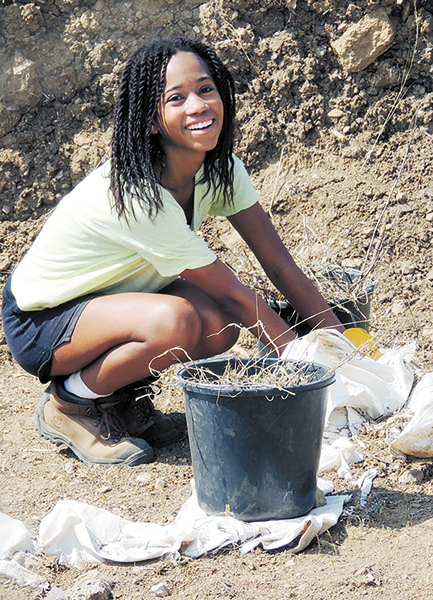
We developed our bonds on and off the site. During the day, we were always ready to lend a hand to carry buckets, take over for a tired teammate, turia away loose dirt or help interpret each others’ finds. Spurred on by ever-cheerful supervisors, we developed a fierce loyalty to our areas. When Nurith Goshen, my area supervisor in D-West, correctly predicted the trajectory of a plaster wall, the excavation paused for a team dance, and as her hypotheses continued to prove fruitful, team members erected a sandbag throne for our fearless leader.
The camaraderie among volunteers also extended off-site. One weekend, two dozen of us rented a bus to Jerusalem. Many of the volunteers slept on the rooftop of a hostel in Jerusalem’s Old City. We traveled in small groups by day and gathered in the evenings to share stories. Laurel Poolman and Sara Soltani were granted access to the Temple Mount and the Dome of the Rock while Jordan Roth and I witnessed the Old City from above as we clambered around the 16th-century city ramparts. While Nikki Banton marveled at the Christ Pantocrator mosaic in the Church of the Holy Sepulchre, 6-foot-5-inch Tharald Strømnes had some trouble fitting into the church’s cramped “tomb of Jesus.”
On another weekend, some volunteers ventured off to Nazareth while party-minded crewmembers took to the streets for Tel Aviv’s all-night White Night celebration. Other volunteers with an adventurous streak quested off on their own. Marielle Velander stayed with a Palestinian family in Hebron to celebrate a friend’s traditional wedding ceremony.
These adventures sparked a noticeable change in our crew. New friendships arose hand-in-hand with new skills gained in the field and in classes led by the area supervisors. As our teammates evolved from acquaintances to friends to family, our excavations transformed the edges of the avocado grove into an archaeological site. Neither change happened overnight. One day near the start of the dig, I was working next to John Tripodo, who was breaking soil with a pickaxe, when Rachel Kalisher noticed that the loose dirt was a different color. Supervisors suggested that we switch to working with trowels, and with greater precision we began to reveal a square discoloration of decayed mudbrick.
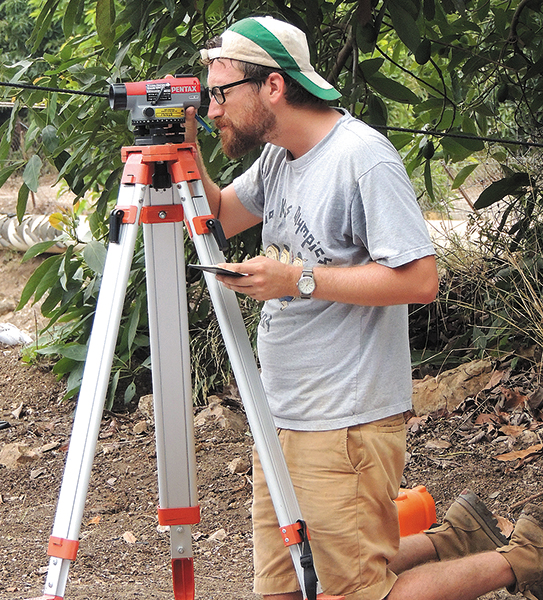
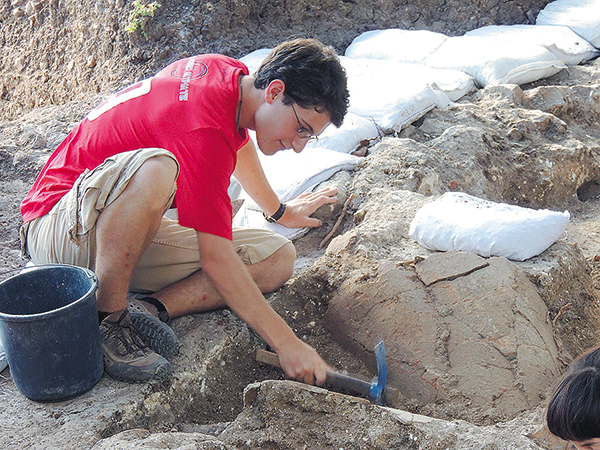
On another day, we found white lines in the soil indicating plastered walls; once again, we put away our large tools to highlight the path of the plaster. As time went on, these detailed analyses developed from the exception to the norm.
In these instances, area supervisors worked closely with team members to identify the finds. In my area, we excavated a room with numerous storage vessels preserved in situ. Once I was dealing with occupation layers, I scraped the soil more often with trowels and handpicks than with pickaxes and turias. Gentle examinations of in situ finds require a soft touch with brushes and narrow, 10-inch wooden cooking skewers. (A trowel’s metal edge is sometimes too abrasive for contact with pottery remains.)
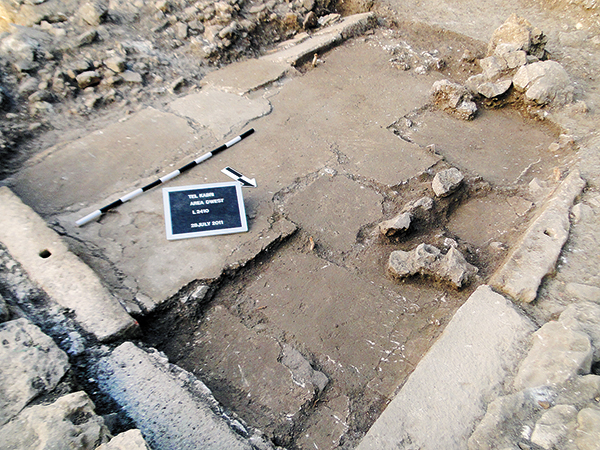
Archaeologists adapt their methodologies to suit the needs of a site. In the northeast corner of my excavation area, some members of our team worked on an Aegean-style building with plaster floors and beautifully cut blocks of stone up to 5 feet long, known as orthostats, lining the walls. Team members exposing the back room of this orthostat building worked in their socks so that their excavation boots would not damage the delicate plaster floors. The function of this back room is yet to be determined; possible interpretations range from a storage area to the “holy of holies” of a sacred structure.
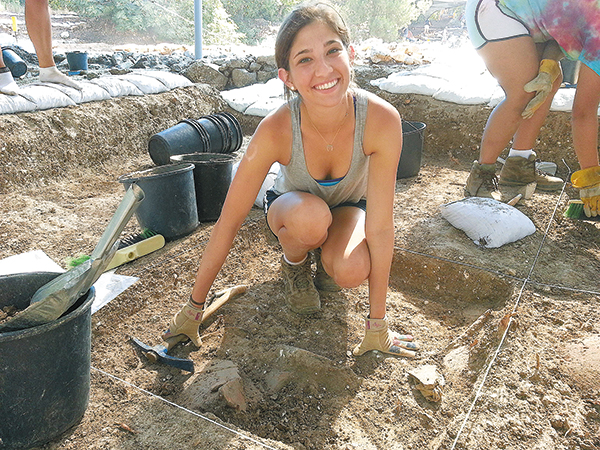
In another room the tops of dozens of massive storage vessels dotted the surface of a single room. Area supervisors strung up 1-square-meter fine grids, allowing each of us to examine “our” storage jar. We leveled the ground around each vessel with trowels, “floating” each artifact above its surroundings before conducting fine articulation with wooden skewers and eventually removing it.
This was the archaeological fairy tale in action. By this point, we were standing in a Bronze Age occupation layer in the palace’s magazine, which had not been touched for 3,500 years. Our team was now a well-oiled machine of friends working in close proximity, each with his own storage vessel.
The significance of the storage vessels was not lost on us. They contained clues to understanding the palace’s tax and trade economy. The excavation’s associate director, Brandeis University archaeochemist Andrew Koh, described the magazine as the “mother lode” for organic residue analysis. Tests on the contents of each vessel will expose the palatial economy at Tel Kabri and the agriculture of the region.
MLA Citation
Footnotes
See Eric H. Cline and Assaf Yasur-Landau, “Aegeans in Israel: Minoan Frescoes at Tel Kabri,” BAR 39:04.


